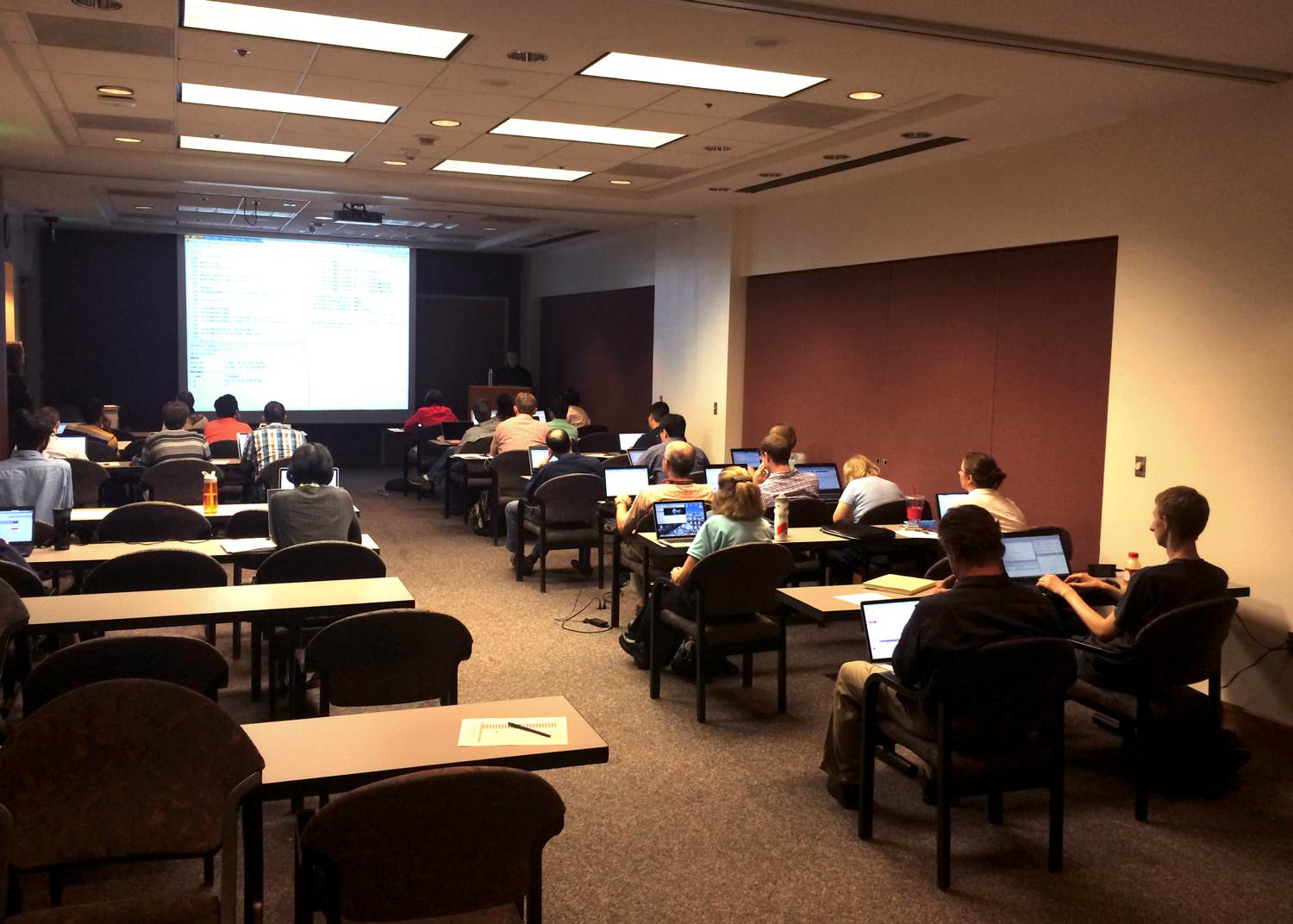I just returned from the Genome Informatics meeting at Cold Spring Harbor. This was, hands down, the best scientific conference I've been to in years. The quality of the talks and posters was excellent, and it was great meeting in person many of the scientists and developers whose tools and software I use on a daily basis. To get a sense of what the meeting was about, 140 characters at a time, you can access all the Tweets sent Oct 28-31 2015 tagged #gi2015 at this link.
Below is a very short list of software that was presented at GI2015. This is only a tiny slice of the tools and methods that were presented at the meeting, and the list is highly biased toward tools that I personally find interesting or useful to my own work (please don't be offended if I omitted your stuff, and feel free to mention it in the comments).
Below is a very short list of software that was presented at GI2015. This is only a tiny slice of the tools and methods that were presented at the meeting, and the list is highly biased toward tools that I personally find interesting or useful to my own work (please don't be offended if I omitted your stuff, and feel free to mention it in the comments).
Monocle: Software for analyzing single-cell RNA-seq data
Paper: http://www.nature.com/nbt/journal/v32/n4/full/nbt.2859.html
Software: http://cole-trapnell-lab.github.io/monocle-release/
Kallisto: very fast RNA-seq transcript abundance estimation using pseudoalignment.
Preprint: http://arxiv.org/abs/1505.02710
Software: http://pachterlab.github.io/kallisto/about.html
Sleuth: R package for analyzing & reporting differential expression analysis from transcript abundances estimated with Kallisto.
Preprint: coming soon?
Software: http://pachterlab.github.io/sleuth/about.html
See also: The bear's lair (http://lair.berkeley.edu/): reanalysis of published RNA-seq studies using kallisto+sleuth.
Paper: http://www.nature.com/nbt/journal/v32/n4/full/nbt.2859.html
Software: http://cole-trapnell-lab.github.io/monocle-release/
Kallisto: very fast RNA-seq transcript abundance estimation using pseudoalignment.
Preprint: http://arxiv.org/abs/1505.02710
Software: http://pachterlab.github.io/kallisto/about.html
Sleuth: R package for analyzing & reporting differential expression analysis from transcript abundances estimated with Kallisto.
Preprint: coming soon?
Software: http://pachterlab.github.io/sleuth/about.html
See also: The bear's lair (http://lair.berkeley.edu/): reanalysis of published RNA-seq studies using kallisto+sleuth.
QoRTs: Quality of RNA-Seq Toolset. Toolkit for QC, gene/junction counting, and other miscellaneous downstream processing from RNA-seq alignments.
Software: https://github.com/hartleys/QoRTs
JunctionSeq: R package for testing differential junction usage with RNA-seq data.
Software: https://github.com/hartleys/JunctionSeq
HISAT2: RNA-seq alignment against populations of genomes (aligns DNA also).
Software: http://ccb.jhu.edu/software/hisat2/index.shtml
Rail: software for aligning many-sample RNA-seq data, producing alignments, genome coverage bigWigs, and splice junction BED files.
Software: http://rail.bio
Preprint: http://biorxiv.org/content/early/2015/08/11/019067
LobSTR: genotype short tandem repeats from NGS data.
Software: http://melissagymrek.com/lobstr-code/
Paper: http://www.ncbi.nlm.nih.gov/pubmed/22522390
Basset: convolutional neural networks for learning functional/regulatory features of DNA sequence.
Software: https://github.com/davek44/Basset
Preprint: http://biorxiv.org/content/early/2015/10/05/028399
Genotype Query Tools (GQT): fast/efficient individual-level queries of large-scale variation data.
Software: https://github.com/ryanlayer/gqt
Preprint: http://biorxiv.org/content/early/2015/06/05/018259
Centrifuge: a metagenomics classifier.
Software: https://github.com/infphilo/centrifuge
Poster: http://www.ccb.jhu.edu/people/infphilo/data/Centrifuge-poster.pdf
Mash: MinHash-based method for rapidly estimating pairwise distances between genomes or metagenomes.
Software: https://github.com/marbl/Mash
Docs: http://mash.readthedocs.org/en/latest/
Preprint: http://biorxiv.org/content/early/2015/10/26/029827
VCFanno: ultrafast large-sample VCF annotation
Software: https://github.com/brentp/vcfanno
Ginkgo: Interactive analysis and assessment of single-cell copy-number variations
Paper: http://www.nature.com/nmeth/journal/v12/n11/full/nmeth.3578.html
Software: https://github.com/robertaboukhalil/ginkgo
StringTie: RNA-seq transcript assembly+quantification, with or without a reference. See paper for comparison to existing tools.
Software: http://ccb.jhu.edu/software/stringtie/
Source: https://github.com/gpertea/stringtie
Poster: http://ccb.jhu.edu/software/stringtie/cshl2015.pdf
Paper: http://www.nature.com/nbt/journal/v33/n3/full/nbt.3122.html























